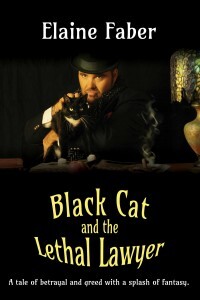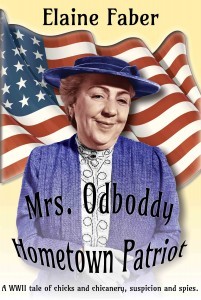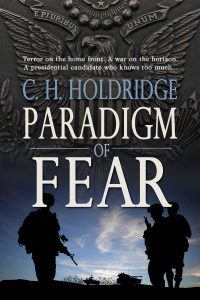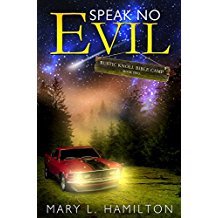James R. Callan's Blog, page 10
August 26, 2017
Add a Pinch of Stress
Many years ago, I took a flight from Houston to Oklahoma City. It was a normal flight for me. But this time, I was seated next to a psychologist. He worked in central America, but was traveling back to Oklahoma City for a visit with his mother. He was very sell-assured and did not for a minute mind telling me of his accomplishments.
I noticed that we had arrived in the Oklahoma City area, but rather than landing, we were circling. Having landed at the Will Rogers Airport many times, I was familiar with the normal flight patterns. This was not normal.
After awhile, the pilot came on the intercom and said that while all seemed okay, the light that indicated the landing gear was locked into position had not come on. We were returning to the Dallas Airport. (Dallas was the home base for this airline.) We would pass low over the airport and let the technical people study the situation and then make a decision on what to do.
This caused a great deal of conversations around the plane. But my seat partner suddenly became very quiet. The flight attendants asked me to help them prepare and I agreed. We took blankets and asked people to put their shoes, purses, glasses, etc. into our make-shift bags. When we filled up a blanket, we stored it in a restroom.
 At this point, I observed a strange phenomena. Women would hand over their purse with little objection. But when it came to the shoes, many were not easily convinced. They did not want to give up their shoes. (I never understood why this was necessary, but the flight attendants were adamant about it.)
At this point, I observed a strange phenomena. Women would hand over their purse with little objection. But when it came to the shoes, many were not easily convinced. They did not want to give up their shoes. (I never understood why this was necessary, but the flight attendants were adamant about it.)
By the time this was accomplished, we were in the Dallas area. We made a pass , slow and low, and we could see many people with binoculars, studying the landing gear of our plane. After a few minutes, the pilot was back on the intercom, telling us that the landing gear looked okay. So, they were not going to put down foam, because If the gear was securely locked in place, it was safer without foam.
My psychologist seat partner refused to give up his shoes. Finally, two flight attendants, both barefooted, came and told him that every other person had complied and we were in a holding pattern until he complied. Grumbling loudly, he handed over his shoes.
At this point, he became very vocal. He blamed his mother for his being on this flight. He hadn’t wanted to come at this time, but no, nothing would do for his mother but that he come see her. She wasn’t dying or anything. He ranted and griped the seat back in front of him so severely the person seated there ask him to stop shaking the seat.
This self-assured, confident man, became a basket case once a little stress was placed on him. My thought was that he really needed to see a psychologist.
As we approached the runway, we could see many fire trucks and emergency equipment lined up along our path. he pilot set the plane down softer than any landing I’ve ever been on, before or since. A cheer went up.
We padded into the terminal, all without shoes. Then airline employees brought out all the shoes, purses and glasses. It was a jovial group now that we were safely on the ground. They didn’t even complain about having to look for their shoes.
So, put your characters under some stress and see how they change. It happens in real life. It should happen in the lives of your characters. Even if they are not psychologists.
Share your moment of stress with us. Thanks.

August 18, 2017
How to Write a Compelling Story
Today’s guest is Elaine Faber, an author of two series . In the Black  Cat series, (as you might guess) a cat is a central figure. The second series is a historical series set during the time of World War II. She lives in Elk Grove, CA, and is a member of Sisters in Crime, NCPA, and the Cat Writer’s Association. Here’s her take on writing a compelling story. Elaine will give a free digital book to one of those leaving a comment, chosen at random.
Cat series, (as you might guess) a cat is a central figure. The second series is a historical series set during the time of World War II. She lives in Elk Grove, CA, and is a member of Sisters in Crime, NCPA, and the Cat Writer’s Association. Here’s her take on writing a compelling story. Elaine will give a free digital book to one of those leaving a comment, chosen at random.
The Plot
A great novel jumps off on page one with a hook that keeps the reader turning pages. Is it about a lost puppy, a hard-boiled CIA agent, bringing a killer to justice, or a romance with the boy next door? A good plot sucks you in and takes you willingly along an adventure. During the journey, you laugh or cry, are scared or surprised, along with the hero. At the end, you wish the story wouldn’t end and you look for the sequel so you can spend more time with the characters.
Creating Conflict
A good story must have conflict. If the CIA agent catches the villain on page one, where is the adventure? If the girl’s boyfriend breaks her heart, where is the romance? If some isn’t looking for a lost puppy, he’s just a puppy.
Supporting Characters
Besides the intriguing main characters, a good story has interesting supporting characters. They are the friends, relatives, or even the protagonist’s pets. They provide the main character someone to interact with. Often they lead to the conflict or help bring about the solution.
Beginning-Middle-End
 A good book has an exciting beginning, a compelling middle, and a satisfying end. The beginning jumps out with an event that convinces the reader to travel this journey with the main character. A mystery to solve, a romantic conflict or a specific goal must be revealed within the first few pages to keep the reader’s interest.
A good book has an exciting beginning, a compelling middle, and a satisfying end. The beginning jumps out with an event that convinces the reader to travel this journey with the main character. A mystery to solve, a romantic conflict or a specific goal must be revealed within the first few pages to keep the reader’s interest.
The middle is the crux of the story, where the character struggles to overcome the obstacles, but events go from bad to worse, and when all seems lost, we come to the end. The reader leaves laundry in the dryer and dishes in the sink to see what happens next.
The ending must tie up all the loose strings, solve all the puzzles and reach a conclusion that is acceptable to the reader. Did you ever read a 300 page novel and the main character dies on the last page. You want to heave the book against the wall!
And the Satisfying Conclusion
In a satisfying conclusion, the hero gets the girl, the killer is revealed, the interplanetary six-headed monster is vanquished, or the puppy finds a new home. A satisfying ending leaves the reader wanting to spend more time with the characters. The author’s challenge is to create stories that satisfy the reader and keep him wanting to buy the sequel.
The Book Cover
At last the book moves through publication and to the store. A potential buyer sees the snappy, good looking, brightly colored cover with an easily read title and intriguing picture or graphic that suggests the story line. The appealing cover tempts the potential buyer to turn over the book to read the plot summary on the back that compels him to buy the book. Mission accomplished.
That’s all there is to writing a best seller. Easy-peasy, right? Now, check out one of my books listed below to see if I did it right. All available on Amazon. One of those leaving a comment will be selected to receive a free digital copy of one of Elaine’s books.
Black Cat’s Legacy A tale of intrigue and murder with a touch of whimsy
Black Cat and the Lethal Lawyer A tale of betrayal and greed with a splash of fantasy
Black Cat and the Accidental Angel A tale of memories lost and love found with a touch of the devine
Mrs. Odboddy – Hometown Patriot, a WWII tale of chicks and chicanery, suspicion and spies
Mrs. Odboddy – Undercover Courier, a WWII tale of mystery, mischief and mishaps
Elaine.Faber@mindcandymysteries.com (email)
http://www.mindcandymysteries.com (Website)
August 11, 2017
Finding Your Muse

Today’s guest is C.H. Holdridge. He has published a political thriller and has several works in progress. He spent seven years teaching English at the high school level. Today, he talks about his Muse and how it helps him in a very unusual way. I think you’ll enjoy this and maybe it will affect your next project.
Music is Your Muse
They say art imitates life. As writers, we know that our artform is born out of the passion we have for telling stories. Biggest question I have heard from other authors is how to make their characters pop more. I have a simple solution – use art to create art.
Personally, I use music as the inspiration for my writing. My pen name is C.H. Holdridge. When I write, particularly when developing characters, I use music as my constant companion. In fact, I find it difficult to write without music in the background. This started in college. I had a professor my sophomore year who taught the music appreciation class I took to fill a credit requirement. The course ended up changing my life. He told us that music is the key to the soul. It infuses every aspect of life and every aspect of life can be broken down in to music. I have taken this to heart with my writing. It got through my undergrad, graduate school, and two novels.
One of the first things I do when sketching out a character is to decide what kind of music they listen to. It does not matter what time period the piece takes place in (music transcends such things). I have written short stories ranging in time frame from the Fall of Rome to futuristic Sci-Fi. Music preference influences personality. For example, in my first novel, Paradigm of Fear, I have three main characters: Josh Parks, Sue Roberts, and Patrick Gates. I sat down and decided what each of them listens to, and how that choice influences their personality.
 Josh likes classic rock combined with 90s grunge. This reflects his gung-ho attitude. He takes care of business, just like Bruce Springsteen. He isn’t afraid to get his hands dirty (grunge) and always gives his all. Sue prefers late 90s early 2000s pop rock, groups like Paramore, Weezer, and Green Day. This reflects her occasional sentimentality and social conscience. These are the things that matter to her most. Patrick prefers classic rock and classical music. Composers like Vivaldi and Mozart. Rockers like the Beatles and the Rolling Stones. Patrick is thoughtful and meticulous; however, he is more than willing to do the hard work and make the hard choices.
Josh likes classic rock combined with 90s grunge. This reflects his gung-ho attitude. He takes care of business, just like Bruce Springsteen. He isn’t afraid to get his hands dirty (grunge) and always gives his all. Sue prefers late 90s early 2000s pop rock, groups like Paramore, Weezer, and Green Day. This reflects her occasional sentimentality and social conscience. These are the things that matter to her most. Patrick prefers classic rock and classical music. Composers like Vivaldi and Mozart. Rockers like the Beatles and the Rolling Stones. Patrick is thoughtful and meticulous; however, he is more than willing to do the hard work and make the hard choices.
I also use music to help set the ambience with the scenes I am writing. For conversation scenes, or love scenes, I use jazz or classical music. Vivaldi (can you tell he’s a favorite?) or Count Bassey are perfect for this. For scenes in my Sci-Fi work, I tend to put on EDM, the endless rhythm with no overt messages is perfect for encapsulating the feelings I imagine when I think of the future. For my action scenes, I turn to heavy metal. Nothing gets my blood pumping more. That’s exactly how an action scene should feel.
When I am sketching a scene, or writing it for that matter, I think of the music that would play on the soundtrack were it a movie. This is an important step. You would not watch a movie with no soundtrack, so you should not write a book without one in mind.
If you, like many of us, suffer from writer’s block, the most vicious and notorious of demons, then selecting a soundtrack to listen to when writing can help you break its hold. Music Therapy is used to treat all sort of ailments: physical, psychological, and developmental. Take a lesson from Music Therapy and apply it to your writing. Use the music to move your inner-self. Use the music to help you reach past what is holding you back. Trust me, it will help.
Find out more about Holdridge at his blog: https://tinyurl.com/yc9qepnz
Paradigm of Fear can be found at: https://tinyurl.com/ybb8hpj4
And please leave a comment on your muse, or why you don’t have one or don’t want one. We’d all appreciate hearing about other people’s muse. Thanks, jim
August 4, 2017
The Heart of the Matter
Today’s guest is award-winning author Mary L. Hamilton. She grew  up in a youth camp in Wisconsin and a series of her books use that setting. Some of the people who passed through might recognize some of the events in her books. She talks about one such incident in today’s blog. Mary is a member of ACFW, CAN, and the Texas Association of Authors. She and her husband live in Texas.
up in a youth camp in Wisconsin and a series of her books use that setting. Some of the people who passed through might recognize some of the events in her books. She talks about one such incident in today’s blog. Mary is a member of ACFW, CAN, and the Texas Association of Authors. She and her husband live in Texas.
If you’re old enough, you may remember that fifty years ago this summer, our country endured a summer of race riots. A total of 159 riots broke out in Chicago, Buffalo, Atlanta, Detroit and other cities. Today’s unrest often reminds me of those days, and brings back memories of that summer when the country’s turmoil infected even the Bible camp where I lived.
Most of the time, living at a youth camp where my dad was the director was like living at Disneyland. I lived where other people came for vacation. It was a fun, mostly sheltered environment for a kid to grow up in. But I remember that summer of 1967 for the alien feeling of tension that permeated the atmosphere around camp. At 11, I didn’t understand much of the current news. I didn’t understand why young black campers got up at every weekly talent show, one after another after another and each one singing his version of Otis Reddings’ Sittin’ On The Dock of the Bay. I do wondering why for the first time, I felt slightly afraid to walk across the campgrounds, even though at our camp, there had never been any distinction made between racial backgrounds of the campers. There were no separate facilities, no separate doors or drinking fountains. All were welcome to come and fellowship with the Lord and each other.
But one week, a young camper seemed determined to cause trouble. When the counselor asked my dad to get involved, Dad invited the young man into his office for a chat. While Dad tried to uncover the root of the boy’s resentment and rebellion, the youngster jerked his thumb toward a picture of Christ on the wall. It was a drawing of Jesus, from the shoulders up, very popular at the time, and it portrayed the Savior with strong Caucasian features.
The boy demanded to know why he should honor a white Jesus, and asked why nearly all pictures of Jesus showed him as being white. Dad agreed that the historical Jesus very likely resembled the young man more than himself. He opened his desk drawer, pulled out a black permanent marker and offered it to the teen.
“You’re welcome to change it, if you’d like.”
It was years before any of us learned the reason for those black scribbles on Jesus’ cheeks. But hopefully, that young teen learned God doesn’t much care about outward appearances. He looks at what’s in the heart. (1 Samuel 16:7)
In Speak No Evil, Book 2 of my Rustic Knoll Bible Camp series, Pastor Zeke uses clever presentations that keep the campers’ attention, all while asking repeatedly, “What’s in your heart?” Taylor Dixon believes Zeke’s messages are all aimed at others, until he confronts what’s hiding in his own heart.
Pastor Zeke uses clever presentations that keep the campers’ attention, all while asking repeatedly, “What’s in your heart?” Taylor Dixon believes Zeke’s messages are all aimed at others, until he confronts what’s hiding in his own heart.
Here’s a blurb for Speak No Evil.
Taylor Dixon knew having his younger sister, Marissa, at camp with him would be a pain, but he never expected the pain to go so deep.
At 15, Taylor wants nothing more than to get his drivers license. But Dad says he must prove he’s responsible by staying out of trouble. Marissa’s adventurous spirit is what usually lands him in trouble, but she’s the only one who believes in his dreams.
Taylor returns to Rustic Knoll Bible Camp expecting the usual sermons, softball and swimming. Instead, he discovers a vintage Mustang in the camp’s machine shed, and the owner’s invitation to help restore it fuels his dream of someday driving a race car. But Marissa falls for Taylor’s snobbish cabin mate, and her thirst for excitement pulls Taylor into a rivalry of words and deeds that threatens to destroy not only Taylor’s hopes of getting his license, but also his dreams for the future.
Can Taylor keep a lid on Marissa’s antics? And will the message hidden in the old car’s engine change his attitude before it’s too late?
Speak No Evil can be found on Amazon at: http://amzn.to/2tUFtEZ
.
July 29, 2017
An Interview with Juan Grande
Interview with Juan Grande
Jim: Today, I’m interviewing Juan Grande. He lives in Puerto Vallarta, Mexico, and as I understand it, he was a big help to Crystal Moore in A Silver Medallion. How are you today, Mr. Grande?
Juan: I am fine, gracias. I not know where “Grande” come from. Please call me Juan.
Jim: Okay, Juan. Of course, Juan Grande translates to Big John. You must admit, you are a stout person.
Juan: Please forgive my English. I not know “stout.” My wife call me solid.
Jim: Okay. That works for me. How did you get to know Crystal?
Juan: My amigo Bull O’Malley call me . Ask I look after her. Help her if possible.
Jim: Did he tell you what help she might need?
Juan: He say she want rescue two niñas, ah, girls, from bad man in San Sebastian.
Jim: Just how bad was this man in San Sebastian?
Juan: Muy bad. Kill people. Steal. Lie. I think drugs.
Jim: Kills people? Who is this man? What is his name?
Juan: He is called Josè Rodriquez de Allende.
Jim: Can’t the police arrest him, lock him up?
Juan: He is rich, powerful. Many men work for him. Maybe police also. He own police. We no get help from police.
Jim: That’s sounds like a big order. How did you go about it? And were you successful?
Juan: I no can tell you. Author tell me no give away plot.
Jim: It sounds dangerous. Did Crystal work with you? Did she help any, or did she just come down and ask you and your men to do it?
Juan: I ask her stay in Puerto Vallarta. Me and my men rescue girls. But she say no. She must help. She no can ask me do it and not help. I beg her stay in Puerto Vallarta. But she no let us go and not she go.
Jim: Did she actually do anything to help?
Juan: Si. Yes. She muy importante. She take girls away.
Jim: Took them away? How did she do that?
Juan: I no can tell you. Author tell me no give away plot.
Jim: Juan, your English is pretty good. Where did you learn it?
Juan: Mi esposa, ah, wife, take university in Texas. She speak good English. I learn some.
Jim: How do you know Mark?
Juan: Bull have home in Vallarta. I meet him long time back. He ride the bulls. He ride one time here. We have much memories.
Jim: Juan, it has been a pleasure talking with you. And I’m anxious to find out if you got the young girls free, and how you – and Crystal – accomplished it if you did. Thank you for your time, and stay safe from Josè Rodriquez de Allende.
Readers, as I understand it, Juan Grande was instrumental in the rescue of the girls. And while he wouldn’t say if they succeeded of not, I believe they were successful. Otherwise, Juan Grande might not be here today. But, I’m getting on the Internet right now to get a copy of A Silver Medallion. Would you like to join me?
Kindle: http://amzn.to/1WxoEaF
90 secondTrailer: https://animoto.com/play/key7NqR0qbmN1JVWrCe8RA#
July 14, 2017
The Cairo Puzzle
Today’s guest is Laurence O’Bryan. He’s an Irish writer who has  achieved some notoriety with his “puzzle” novels. Today, he talks about his fifth in the series, The Cairo Puzzle.
achieved some notoriety with his “puzzle” novels. Today, he talks about his fifth in the series, The Cairo Puzzle.
I visited the Great Pyramid of Giza in February, 2017. The passages inside were very different to what I had imagined. They were smaller and narrower. But the Grand Gallery, shown above, is a stunning space, which we still don’t understand.
It’s located in the center of the pyramid and leads to the King’s Chamber, the location of a number of scenes in The Cairo Puzzle. See its location below.
The interior of the Great Pyramid. CP Smyth, 1877.
What interested me most was the possibility that the Grand Gallery was a scared space used for the recitation of hymns by the ancient Egyptian priesthood. The space echoes wonderfully. It would have been a powerful place in which to recite hymns.
If this was the case, the Cannibal Hymn is likely to have been recited there.
Appearing first in the Pyramid of Unas at the end of the Fifth Dynasty , the Cannibal Hymn preserves an early royal butchery ritual in which the deceased king slaughters, cooks and eats the gods and others, incorporating into himself their powers.
The style of the Cannibal Hymn is characteristic of the recitational poetry of pharaonic Egypt. This will give you a taste of what the Cannibal Hymn was about:
A god who lives on his fathers,
who feeds on his mothers…
Unas is the bull of heaven
Who rages in his heart,
Who lives on the being of every god,
Who eats their entrails
When they come, their bodies full of magic
From the Isle of Flame…
The cannibal hymn also reappeared in the Coffin Texts as Spell 573.
Which got me thinking. Where did the early Christian fathers get the idea of Christ’s body and blood being given out to all those who attend Mass? Isn’t there an echo of our cannibalistic past in this central Christian ritual?
Christ himself is believed to have spent his missing years in Egypt. If so, that may have been where he learned his magic, turning water into wine and raising the dead. Egypt was the home of ancient magic and a place of great medical knowledge. Roman Emperors wanted their physicians to be Egyptian.
Galen , one of the most influential physician in history, who helped the Empire deal with the Antonine plague studied at the great medical school in Alexandra. Hippocrates (the “father of medicine”), studied at the temple of Amenhotep , and acknowledged the contribution of ancient Egyptian medicine to Greek medicine.
That Christ learned how to heal the sick in Egypt is a perfectly reasonable proposition. That his followers adapted the ideas of the Egyptian priesthood, including the mythic symbolism of eating a part of a god to have something of that god transferred to you, is also very reasonable.
Whether the ancient Egyptians priests were also cannibals is open for debate.
The question is, how does this all relate to The Cairo Puzzle? Well, here’s the thing, the Great Pyramid still holds secrets. The parts that we know inside represent only a small part of what the ancients described as being inside the great pyramid.
Historical commentators, such as Manetho and Plutarch, claimed that a Hall of Records , under the area of the pyramids at Giza, housed written records of the founders of Egypt. And records of ancient cities that came before, and of how the larger pyramids were constructed.
If the Hall of Records contains such records, it will also contain more details of the uses of the Cannibal Hymn.
As the Cairo Puzzle opens, Isabel Ryan travels to the city in search of Sean, her husband, who went missing, presumed dead, at the end of The Nuremberg Puzzle. The first place she looks for him is in a hospital.
To find out more stay tuned. The Cairo Puzzle will be released in July, 2017.
July 7, 2017
Make Flawed Characters Likable
Today’s guest is Kristin Neva, an author and blogger who writes  small-town fiction set on Upper Michigan’s Keweenaw Peninsula.
small-town fiction set on Upper Michigan’s Keweenaw Peninsula.
Kristin’s first book, Heavy, co-authored with her husband, Todd, journeys through the first year after Todd’s ALS diagnosis as the Nevas struggle to find meaning, hold on to faith, and discover joy in the midst of pain.
She will give a copy of her book Copper Country, A Copper Island Novel, to someone who comments, so please sign up.
3 Ways to Make Deeply Flawed Characters Likable
If you’ve ever interviewed for a job, you may have been asked about your greatest strengths and weaknesses. It’s a trick question. They’re looking for chinks in your armor.
You may have answered with a weakness that can only benefit your potential employer — “Sometimes I’m so dedicated to my work that I forget to eat lunch and I get really hungry.”
It’s a non-weakness.
If our characters are too perfect, our readers will write them off as unrealistic. Readers want flawed characters.
Some flaws are endearing. In a romance, we cheer for the nice guy who likes the girl but tries too hard. We laugh at the absent-minded professor and the clumsy detective.
But when we write about deep themes, we may want our characters to have deep flaws, even at the risk of making them less likable. A sarcastic waitress. A judgmental woman.
Flaws may be part of the character arc or necessary for the conflict, but the protagonist must still be likable.
Here are three ways to make deeply flawed characters likable:
Have her save a cat
In the 1978 Christopher Reeves movie, Superman literally saves a cat stuck in a tree in one of the opening scenes.
 In my most recent novel, Copper Country, my main character has a sharp edge to her tongue. To make Aimee more likable, I inserted a intellectually disabled young man into an early scene with Aimee working at a diner so she could demonstrate her kind heart.
In my most recent novel, Copper Country, my main character has a sharp edge to her tongue. To make Aimee more likable, I inserted a intellectually disabled young man into an early scene with Aimee working at a diner so she could demonstrate her kind heart.
“I got three dollars and fifty-seven cents.” Mikey strewed crumpled bills and loose change on the counter.
“That’ll buy you whatever you want.” It didn’t matter how much he had, because Aimee always covered the rest from her tips.
Make the character recognize and regret her flaw.
In my first novel, Snow Country, Beth is interested in Danny, but she recoils when he tells her about his sexual past.
One of my beta-readers didn’t like my main character because she was judgmental, but that was one of the main conflicts driving the book. So I had Beth recognize and regret her flaw.
“I’ll go now.” He stood.
“Don’t go.” She held his forearm and pulled him back down to the chair. “I’m sorry I was judgmental. I don’t want to be like that.”
Her judgmental-ism continued to be an issue in the story, but her being self-aware of the flaw makes it more palatable.
Show potential for change.
Readers will tolerate a flawed central character if they see potential for change.
In my first novel, my main character Beth is not only judgmental, but also lacks confidence. Beth had just been jilted a few weeks before her wedding, and she is understandably upset. She is 25 years old, and she’d like to move on with her life, but her mother is super controlling.
My beta-readers were not really rooting for her, but they couldn’t quite put their finger on why not.
I learned that readers do not like weak characters. They’ll root for underdogs only when they show courage. But the central character arc of my first book was Beth developing sisu, which is the word Finnish-Americans use for resilience in the face of adversity.
Ultimately, I rewrote the opening scene in which her fiancé dumps her during their burrito lunch, giving her a little more spunk than she had in earlier drafts.
“We can still be friends.” He wiped his desk with a napkin.
Well, I like my friends so that’s not going to work, she thought. “Let me help you clean that up.” She swept both burritos into the garbage can.
“Hey, I was going to eat that.”
“I was going to marry you.” She plunked the can down next to him. “Go ahead. Eat it.” She twisted the engagement ring off her finger and was about to throw it at him, but then thought better of it. She stuffed it in her pocket and left.
Those are just three ideas to make flawed characters more likable. I’d love to read other ideas from you.
Comment below and we’ll enter your name in a drawing to win a copy of Kristin’s new novel, Copper Country.
Learn more about Kristin and explore Copper Island at KristinNeva.com
June 30, 2017
The Last Frontier
Today’s guest is Deborah Dee Harper, a writer from Tennessee who graduated from Jerry B. Jenkins Christian Writers Guild where Misstep was a finalist in the 2009 Operation First Novel competition. Recently, she moved to Eagle River, Alaska. Read her post here and I’m sure you’ll want to grab one of her books.
who graduated from Jerry B. Jenkins Christian Writers Guild where Misstep was a finalist in the 2009 Operation First Novel competition. Recently, she moved to Eagle River, Alaska. Read her post here and I’m sure you’ll want to grab one of her books.
Moving to the Last Frontier
My oldest daughter, her five-year-old daughter, and I recently made the 4,061 mile move from Murfreesboro, Tennessee, to Eagle River, Alaska, which was viewed as ridiculous by most of our family members (and probably a few of the neighbors). Can’t say as I blame them. Yes, it was a drastic move, but also one we did not take lightly. We’d lived on Elmendorf Air Force Base in Anchorage (ten miles south of Eagle River) from 2008 through 2012, so we were familiar with the vicinity, the weather, geography, and cost of living of the Last Frontier (not to be confused with William Shatner’s Final Frontier). It wasn’t unplanned by any stretch of the imagination. We thought long and hard about it, and in the end, decided to take the plunge.
Our reasons were many and varied. We love the wild, pristine, natural setting of Alaska. We look forward to watching bears, moose, eagles, foxes, wolves, beavers, and  porcupines cross our paths (some of those more dangerous ones would be from the safety of our car), and love the magnificence of the scenery up here. The mountains, ocean, waterfalls, rivers, glaciers, lakes, streams, and unending forests are awe-inspiring. Yes, there are towns and cities like any other state, and to be honest, it’s getting harder every day to distinguish Anchorage (which, in my opinion, was once about fifty years behind the rest of the U.S. when it came to shopping, restaurants, etc.) from any city of the same size in the lower 48. But once you leave those towns and cities, you enter a wild paradise of natural wonders.
porcupines cross our paths (some of those more dangerous ones would be from the safety of our car), and love the magnificence of the scenery up here. The mountains, ocean, waterfalls, rivers, glaciers, lakes, streams, and unending forests are awe-inspiring. Yes, there are towns and cities like any other state, and to be honest, it’s getting harder every day to distinguish Anchorage (which, in my opinion, was once about fifty years behind the rest of the U.S. when it came to shopping, restaurants, etc.) from any city of the same size in the lower 48. But once you leave those towns and cities, you enter a wild paradise of natural wonders.
One of the reasons I was open to moving here was that it no longer matters where in the world a writer lives. The internet has made writing from anywhere possible. In the pre-internet years (remember those?), a writer’s proximity to the publishing meccas of the country was important. Snail mail made submitting an arduous process of writing, editing, finalizing, compiling the submissions packet, targeting your publishers, putting it in the mail, and then … waiting. And waiting. It could take a month, six months, a year. And even after waiting all that time, there was absolutely no guarantee 1.) they even got it, 2.) the person to whom it was addressed hadn’t left or died, 3.) it hadn’t been  inadvertently tossed away, or 4.) it would be an acceptance. The internet and relatively instant submission process has certainly made a difference in that regard. But just as importantly, now that most of the civilized world is connected in one way or another to the internet, a writer can work from anywhere as long as he/she can reach that internet connection.
inadvertently tossed away, or 4.) it would be an acceptance. The internet and relatively instant submission process has certainly made a difference in that regard. But just as importantly, now that most of the civilized world is connected in one way or another to the internet, a writer can work from anywhere as long as he/she can reach that internet connection.
That’s important to me and to other writers who want to write from places that inspire them. Alaska does that for me. Whether or not we choose to stay in Alaska for a year, ten years, or longer, it’s important to me to know I can live where I want and still do what I enjoy—writing humorous and inspirational books.
If you’ve had any “adventurous” moves, tell us about them in a comment. Thanks.
June 23, 2017
What’s in Your Retirement?
Retirement Can Change Your Life – Or Someone Else’s Life.
Retirement. That word means different things to different people. And it means different things to an individual at different times of his or her life.
Some see it as an opportunity to travel, to go places time has not permitted in the past. Others see it as a time to kick back and do nothing, watch more TV, read more books, get in a daily siesta, join a coffee klatch with other retirees, or have no schedule at all.
at all.
How many retirees use the additional free time to improve their golf game, or develop a better bridge game. Others use the new-found time to work with charitable organization.
But some choose to use their skills to train or otherwise help people in need.
Sylvia had begun sewing as a child, making her own doll clothes. She continued as an adult, making her husband’s suits, ties and shirts. After awhile, Sylvia Remple began teaching sewing and eventually opened a clothing manufacturing business. It grew quickly and before long she had three hundred employees. In 1982, her company, Sun Ice, outfitted the first team of Canadians to conquer Mount Everest. Two years later, her company was awarded the contract to outfit many Canadian teams for the Winter Olympics in Los Angles. Following that success, Sun Ice became the Official Clothing Supplier to the Winter Olympics hosted by Canada
In 2001, Sylvia Remple sold the business. Retirement. What to do now?
About the same time, she became aware of the poverty in Sierra Leone and in particular, the desperate circumstances for some women. She came up with an idea.
Sylvia and daughters Tammy and Angela formed Sewing Seeds International – SSI. Its mandate was to create self sustaining sewing schools in impoverished areas, empowering women, bringing hope for a better future.
 The first project was in Sierra Leone. SSI secured backing from some companies, purchased sewing machines and materials. In Sierra Lione, they found a place to hold classes, then advertised for women who wanted to learn a skill that would help them toward a better future.
The first project was in Sierra Leone. SSI secured backing from some companies, purchased sewing machines and materials. In Sierra Lione, they found a place to hold classes, then advertised for women who wanted to learn a skill that would help them toward a better future.
The classes were intense. Sylvia also realized that to keep attendance and attention at a high level, the school must provide care for the many young children of the students. So, day care was provided, including meals.
At the end of the three week classes, the machines were left in the classrooms and the women were encouraged to continue working on their sewing skills.
A few months later, these same women were given another three-week school, introducing them to more advanced skills. Again, the machines were left for the students to practice and make clothes for their children and themselves.
A third course was offered. Now, the students were capable of using patterns and making items for sale. But most important for the Sewing Seeds mandate, the best students were trained so they could teach classes to other women.
The success of the school encouraged SSI to move into other countries. Classes have been given in Africa, Europe, South America, and Mexico.
Has it been successful?
Absolutely. All can make clothes for their families. Many of the women now make a decent living sewing for others. Several have formed companies to manufacture  clothes. One graduate now has a company with eight other women working, all making a decent living. Graduates of another school formed a co-op which now has a contract to supply all the uniforms for a school system in a nearby larger town.
clothes. One graduate now has a company with eight other women working, all making a decent living. Graduates of another school formed a co-op which now has a contract to supply all the uniforms for a school system in a nearby larger town.
Because they are set up to be self-sustaining, these schools should bear fruit for years to come. The Canadian government has recognized SSI as a certified charitable organization. In many places around the world, SSI is recognized as a life-saver.
Is Sylvia bored in her retirement? Not even a little. Her compensation? Seeing impoverished women now able to be self-supporting, infused with hope for a brighter future. That’s better than a paycheck.
What is her retirement? To help others.
While going into extremely poor, perhaps desperate, areas may not seem like a fun thing to do in retirement, it must be extremely rewarding and give one a true sense of worth that a game of golf probably won’t.
Sylvia would tell you she has found the perfect retirement.
What do you see for yourself in retirement? Leave a comment on your retirement.
June 16, 2017
The Best Place to Write
Today’s guest is Ilene Schneider, one of the first women rabbis ordaine d in the U.S.. She has decided what she wants to be when she grows up: a full time writer. She is the author of the critically acclaimed Chanukah Guilt, the award-winning Unleavened Dead and other mysteries. Her latest book is Yom Killer. She also has several non-fiction books published. She lives in New Jersey with her rabbi husband.
d in the U.S.. She has decided what she wants to be when she grows up: a full time writer. She is the author of the critically acclaimed Chanukah Guilt, the award-winning Unleavened Dead and other mysteries. Her latest book is Yom Killer. She also has several non-fiction books published. She lives in New Jersey with her rabbi husband.
I’ve written in the past about how I can’t write at home. In February, 2010, I posted my reasons in my blog: “At home, even if no one else is there, the dirty clothes call out to me. Then I’m listening for the washing machine to stop. Then the dryer buzzes. And buzzes. And buzzes. Until I finally give in and fold the clean clothes. Then I notice the unread paper on the kitchen table and decide to take a “few minutes” to read it. An hour or so later, I finish the comics and hear the mail truck. I chat with the mail deliverer (his sister lives at the end of the cul-de-sac), sort through the mail, dump the solicitations and ads into the recycling, decide the bag is getting full and take it out to the recycling can. By now, the second load of laundry in the dryer is buzzing. And buzzing. And buzzing. For some reason, I decide the underwear absolutely must be folded immediately, and the underpants sorted by color. Those chores done (others beckon, but I ignore them), I sit back down at the dining room table in front of the laptop, glance out the window into the backyard, and notice my bird feeders are empty. And the bird baths need to be not just refilled but scrubbed to get rid of the squirrel poop. I’m wondering if I have time to go to one of the two wild bird supply stores in the area (each one seven miles away, in opposite directions) for more suet or mealworms or whatever …” You get the idea.
I have two “offices” and alternate between them. One is Starbucks; the other is Dunkin’ Donuts. Finding a Dunkin’ Donuts in my area of South Jersey is like looking for a Starbucks in Seattle. If you’re not standing in front of one, look down the block. There will be two.
They have the same benefits: fattening snacks and drinks. And lots of outlets for plugging in my laptop. But I also find the low ambient noise in those places – noise that has nothing to do with me – helps me focus. I learned why it worked when I read a report that students really do study better in the student center or a coffee shop. I was vindicated!
Oops. Not so fast. It turns out that there is just as much research proving the opposite: distractions interfere with the absorption and retention of new information. But … ah ha! … I then read: “… a moderate level of ambient noise actually is ideal for creative thinking. Apparently, moderate noise increases processing difficulty, which in turn promotes abstract processing. In other words, the extra work our brain has to do while processing a problem or task in a relatively noisy environment gives us the extra push we need to find more creative solutions.” (https://www.brainscape.com/blog/2015/...)
Yes! I was right! I do work better in a public space!
There are, of course, disadvantages, too: having someone I know come up to me and ask if I’m working on my next book, while I’m actually on Facebbook or watching “EastEnders” on BritBox. And the other customers, who are job applicants being interviewed in the early afternoon, raucous middle school and high school students in the late afternoon, and students meeting with their tutors in the evening. And the parent group that took over every table and chair for a meeting to plan a dance recital.
Plus, there is the huge wall-mounted TV perpetually tuned to Fox News in the Dunkin’ Donuts closest to my home. Usually, the volume of the music playing overhead is loud enough I can tune out the TV, especially if I’m sitting at a table on the  other side of the room with my back to it. Usually, but not always. Recently, during the above-mentioned parent meeting, the only available seat was an easy chair under the TV. So I put on earbuds and logged onto BritBox. And ordered a fattening snack and drink. I’m sure I’ll eventually figure out how to use the experience in my next book.
other side of the room with my back to it. Usually, but not always. Recently, during the above-mentioned parent meeting, the only available seat was an easy chair under the TV. So I put on earbuds and logged onto BritBox. And ordered a fattening snack and drink. I’m sure I’ll eventually figure out how to use the experience in my next book.
Website/blog: http://rabbiauthor.com
Email: rabbi.author@yahoo.com
FaceBook: www.facebook.com/rabbi.author



